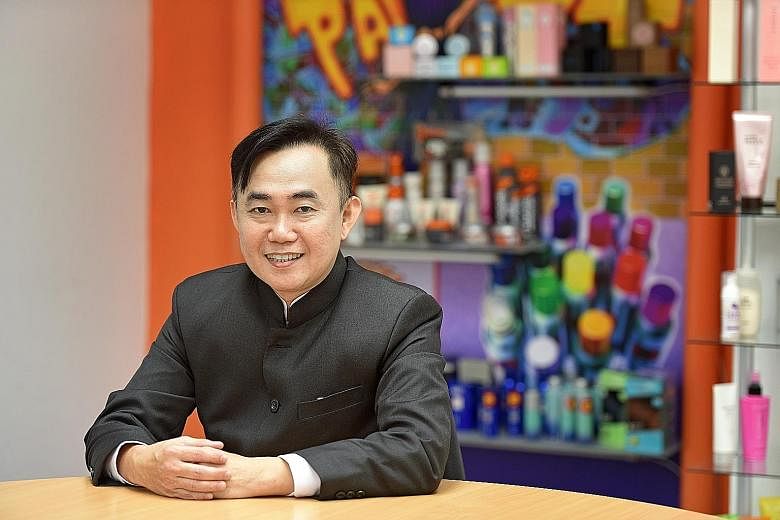Q What were the early years like for Mase?
A My parents founded the company in 1976 as a trading firm, mainly to import and distribute hair-dye products made in Japan. By the 1990s, we had grown our distribution network to Malaysia. I came back from England and joined the business in 1993.
By then, we had started to venture into manufacturing licensed products, starting with a shampoo plant set up in Johor Baru in 1990, and we had worked to obtain Malaysia's Good Manufacturing Practice certification. The "upgrade" was more than just for compliance. We wanted to improve our products and upscale our business.
The company learnt a lot as a manufacturer from the early experience and this enabled us to launch our own brand, Amby, in 2001.
Q Why did you make that shift from licensing to launching your own products?
A We wanted to have our own intellectual property. As a licensed manufacturer we had faced a lot of restrictions; we couldn't expand into new product categories, or into overseas markets beyond the licensed territories.
It was a bumpy learning experience at the start, especially in terms of matching products to specific market needs. For example, one of our early mistakes was going heavily into the men's shampoo segment, only to realise later that women's shampoo was what could give us better sales volume. Men instead would spend more on styling, a segment that wasn't as competitive at that moment, so we launched the Amby Hex hairstyling line.
As we grew our products and markets, increasingly we felt the need for better product research-and-development capabilities.
Q Can you describe your R&D journey?
A We first began focusing on R&D when we tried to launch our own hair-dye products, in 2008. After some initial launches, we saw the need for product improvement - that meant better equipment, better talents and a proper lab.
But that didn't happen until 2015, after we forked out an investment of around US$100,000 (S$142,000). With that we also expanded our headcount. The company used to have only one chemist working on both product development and QC (quality control). After that, we had a team of two chemists focusing on product R&D, and a separate team working on QC.
The specific obstacle that we needed to tackle was how to overcome the technical difficulties in producing more colours for our hair-dye range. We have ramped up our own R&D, but fortunately, we have not had to grope for answers in the dark because we have partners to rely on.
Q Who are they and how do they help?
A Last year, we approached the Intellectual Property Intermediary (under the Ministry of Trade and Industry), which matched us with A*Star's Institute of Materials Research and Engineering (IMRE) and Nanyang Polytechnic. On top of that, we tapped Spring Singapore's Capability Development Grant. Because of IMRE and Nanyang Poly's strong foundation of scientific expertise, we have been able to learn more about nano dye technology. This is what we're looking at to help lengthen the effect of our red dye, which otherwise will fade rather quickly. I'm glad to see that we have arrived at a formula that's just two to three years away from commercialisation.
Overall, it's been a very fruitful partnership. It really upgrades our level of R&D capabilities, expanding our horizon to look at the latest lab equipment and techniques, but more importantly, forefront theories and patents that we are otherwise unlikely to get exposed to.
Q How has Mase's business grown?
A We now have close to 10 house brands that cater to both the retail and the saloon segments, with the latter a growth segment that we want to increasingly focus on.
In terms of expansion, Mase has been successful in venturing overseas, something that we have had our eyes on before it became a national priority for SMEs (small and medium-sized enterprises) today.
Starting first with Vietnam, we are now in Myanmar, Thailand and Indonesia, alongside Singapore and Malaysia. Outside Asean, we're selling in Hong Kong, Australia, India, Pakistan and the Middle East. Overseas revenue accounts for almost 70 per cent of our total.
The head start has benefited our growth. For instance, we entered Myanmar in the 1990s, way ahead of most other foreign consumer companies and, today, our brands have a very firm market share there.
But going overseas isn't something you plunge headlong into. It requires that you first secure your home market as a foundation and source of capital for your expansion. If you can't at least have a sustainable business model at home, you are not going to succeed overseas.


